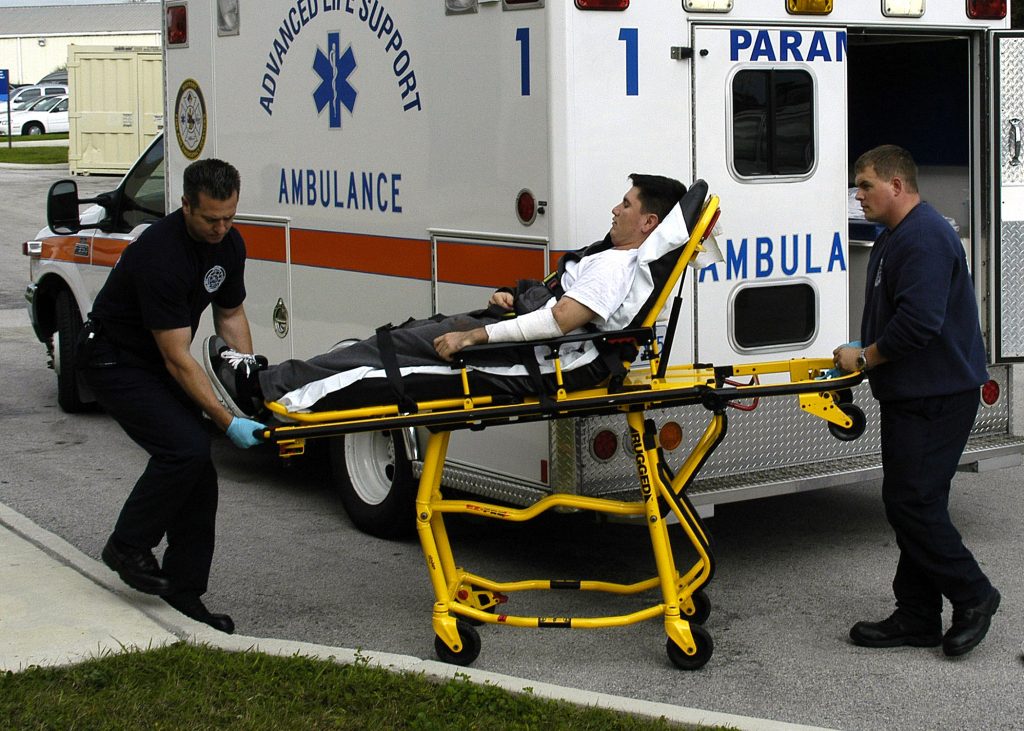Ambulance stretchers are often misunderstood or misused especially when safe patient transportation’s concerned. Such things usually happen as a result of ignorance or carelessness.
Anyway, here are a few tips to operate ambulance stretchers in the best possible way especially during the times of an emergency. Let’s go through them without further ado.

P.S. It should be said that minimum two persons are required for effective handling of an ambulance stretcher, especially during the time of emergencies. So make sure that you don’t try to do everything yourself because a little mistake here and there will add up to the miseries.
- Lowering the stretcher
There should be a handle at the foot of the stretcher. It should be painted either in red or in black. Look for it. Sometimes it goes below the length of the mattress but it should be there for sure.
Pull the handle (make sure your partner does the same as well your opposite end) and take the stretcher off its wheels. Place it slowly and steadily on the ground, closer to the victim.
There’s one more thing I reckon that you should know about the lift. DO NOT lift the stretcher through the use of your back muscles. Keep you back straight while squatting; use your leg muscles for the entire. Otherwise, it might result in a real bad back pull that might cause you enough discomfort for the upcoming weeks.

- The transfer
The transfer’s usually dine through two recommended techniques.
- The dragging sheet technique
In this case, the medics use the means of a bed sheet to drag the victim to the top of the stretcher. Many medical professionals do not approve of this technique. That’s because a bed sheet doesn’t have proper grips to alter hand and grip positions for proper handling.
But if you do not have proper equipments in hand, this can be a great way to get the victim to safety provided you do it the right way.
This technique usually depends a lot on the weight of the victim. So you have to get a good estimation of the victim’s weight before you go on with this technique to lift him/her on to the stretcher.
According to CCOHS recommendations, the spinal compression forces for the lift should be roughly around 800 pounds. It’s also seen that if you pull a 110 pound patient through this technique, the spinal compression force can go beyond 800 pounds to around 900 to 1900 pounds which is NOT recommended in any way.
So exercise proper caution before implementing this technique.
- The “no friction” technique
This dictates the use of a flexible stretcher for the task in hand.
Flexible stretchers are generally provided by every ambulance services. But the problem is medics and paramedics don’t exactly use this beautiful piece of equipment a lot to tackle the job at hand. That’s because its looks doesn’t exactly guarantee safety to the eye.
My advice will be not to go with the looks. The flexible stretchers can do wonders if you use them the right way.
The vinyl tarp of the flexible stretcher also helps a lot in reducing the spinal pressure and brings it well below the safety mark (800 pounds). The use of flexible stretchers can also result in a significant reduction of friction in comparison to that of any other technique. This can actually assist you in your transfer process. It allows you to slide the patient onto the primary ambulance stretcher with maximum safety and maximum efficiency.
Hence, I call it the “no friction” technique. Simple, yet effective at the same time.
- The lift
Lift the stretcher in sync with your partner. DO NOT use your back muscles to lift the stretcher up. Keep your back straight (just like you did while lowering the stretcher down for the victim at the start) and use your leg muscles slowly to lift the stretcher up onto the wheels.
The transfer of weight should be slow. Otherwise, you might hurt your shoulder in the process.
A few thumb rules…
- Keep a calm head. If there’s a crowd around the victim, disperse them ASAP.
- Try not to move the victim too much especially when you suspect a spinal injury.
- Be slow and steady in your movements. Don’t hurry unless the situation calls for you do so. Otherwise, you might hurt both the victim and yourself at the same time.
So that’s it then. Hope you remember these tips while doing your duty to the mankind. Keep up the good work.






![Cognitive Enhancers and Smart Pills Gain Popularity among Women [Press Release]](https://lerablog.org/wp-content/plugins/wp-thumbie/timthumb.php?src=http://lerablog.org/wp-content/uploads/2015/04/cognitive-enhancement.jpg&w=300&h=140&zc=1)
